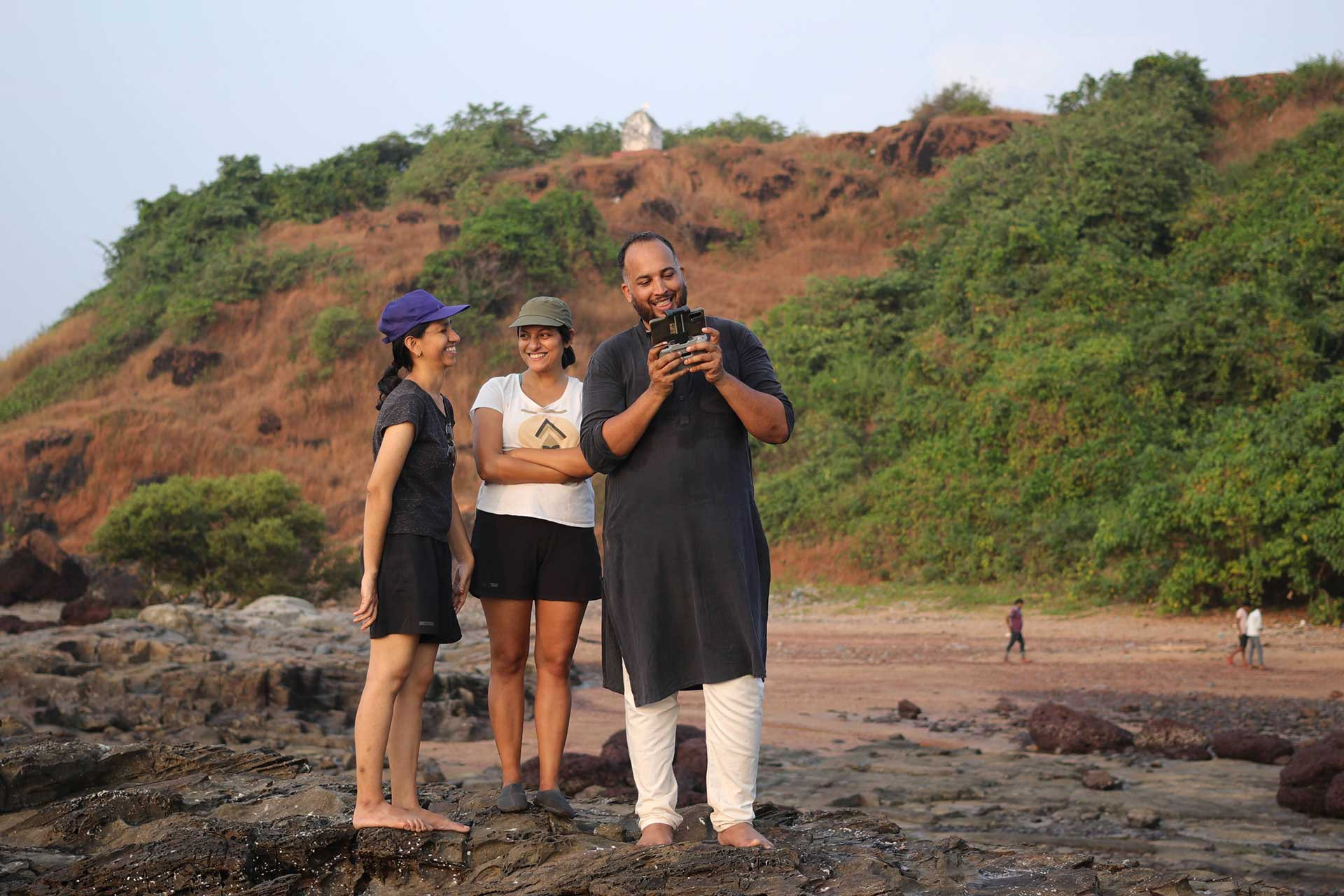Shashank Srinivasan, the founder of Technology for Wildlife, left an indelible mark on the hearts of those who knew him, leaving each of us shattered when we heard about his sudden passing. So many of us were left pondering the same question, “Why? We had so many plans together.” From mapping illegal railway track expansion, identifying wildlife through computer vision using drone footage, creating 3D models of mangroves and corals to understand restoration efforts, making data, software and processes as open-source as possible, and so much more.
Passionate about wildlife conservation and mapping the world, Shashank went beyond the conventional boundaries of his work, embracing every bit of joy life had to offer and would urge each of us to do the same. Besides his dedication to work, our mutual friends recall how he chased sunsets and how they would inevitably run into him during swims and cycling trips. Shashank created art from driftwood and fought tirelessly for our forests in equal measure. He did it all, from flying kites on Miramar beach, working with Jairam Ramesh (the ex-Forest Minister of India), immersing himself in mapping the high-altitude lakes of Ladakh, and savouring Goan siestas. He was the kind of person who made an average day better, whether through his exotic meeting locations or simply with his heartfelt hugs.
Shashank had a unique understanding of the interconnectedness between humans and nature, also the potential and limitations of the technology he loved. He hoped to address the ecological crisis with the same tools often used to exacerbate it. His values were firmly grounded in the problematic implications of the technology he advocated for, while letting the kite of possibilities fly high and free. He sought to balance the pulls of experimentation, efficiency, and scaling impact with the imbalance of power, concerns about privacy, and data security.
He created opportunities where they hadn't previously existed and went far beyond creating maps for wildlife. Through his intricate cartography, he crafted visions of boundless skies untouched by transmission lines and created maps that showed how new highway expansions would threaten our much-needed forest integrity. One of his significant accomplishments was providing imagery for Mollem's green heart when thousands of trees were cut down for a transmission line substation. The image helped rally support across Goa and the planet for Amche Mollem.
Shashank's unwavering belief in the power of trust and collaboration shaped his being, making him a beacon of trust-based support and inspiration. He effortlessly embraced real-time research, occasionally saying no when he couldn't make a deadline and almost always produced time-bound results that were utilised by scientists, lawyers, citizens, and courts, in an accessible, engaging and scientifically rigorous manner. Whether at Central Empowered Committee (CEC) meetings, engaging with lawyers at Goa Foundation, enduring the monotony of political encounters during the last elections in Goa, or offering solace to friends recovering from health setbacks, Shashank's support was unwavering. He was someone who knew how to live life and almost, like a premonition, never took time for granted.
His understanding of gender, privilege, and positionality was remarkable, especially considering the crisis of male leadership facing Indian wildlife biology today. The gender ratio and work relations at Technology for Wildlife alone are a testament to this, made possible by the conscious steps Shashank took to create a safe working environment where his colleagues could thrive. Menstrual leave was one of the first internal policies instituted. When renewing contracts, he insisted that salaries were negotiated, which helped many in the team advocate for their own values, even if a nudge was needed.
When setting up collaborations, it was not just ‘what’ conservation impact, but also 'how' work was done. There was a regular assessment of how team members were treated by collaborators, which helped to build trust in the larger network. Respect and safety were prioritised, and sometimes projects were foregone if the team felt uncomfortable.
As female colleagues, co-presenting with Shashank meant that, even if you doubted yourself, he encouraged you to take the stage. The thought of picking up the book chapter that we were scheduled to write together or kickstarting the plans we dreamt together is painful, but it also serves as a masthead for what we will need to find within ourselves to work through this loss.
Shashank was there to help us find our starting points, discover lost paths, take notes, pack food, and nurture our well-being. Without his presence, the needle of the compass feels unsteady. Yet, maybe with time, it will serve as a reminder to pivot and orient ourselves with the guidance of our north arrow, who is now our north star.
Grief, as a dear friend said, offers no consolation. Meanwhile, your favourite more-than-humans, whom you wanted to be illustrated for the anniversary of Technology for Wildlife, will also miss you, Shashank. The pair of Black-necked Cranes, the Horned Larks and tiny redstarts, along with the amphipods in the lakes of Ladakh, thank you for mapping their habitat. The dragonflies and Brahminy Kites in the mangroves of Goa and the Smooth-coated Otters thank you for highlighting the importance of Goa's age-old khazans. The critically endangered Indian Gharial and the Ganges River Dolphin thank you for your love and care for Indian rivers. The forests behind Tambdi Surla temple that you mapped live on in gratitude. On April 22nd, you departed from this Earth, and a month later, in grief, solidarity, and lots of love from your friends and family, we hope you are mapping the stars, Shashank.





